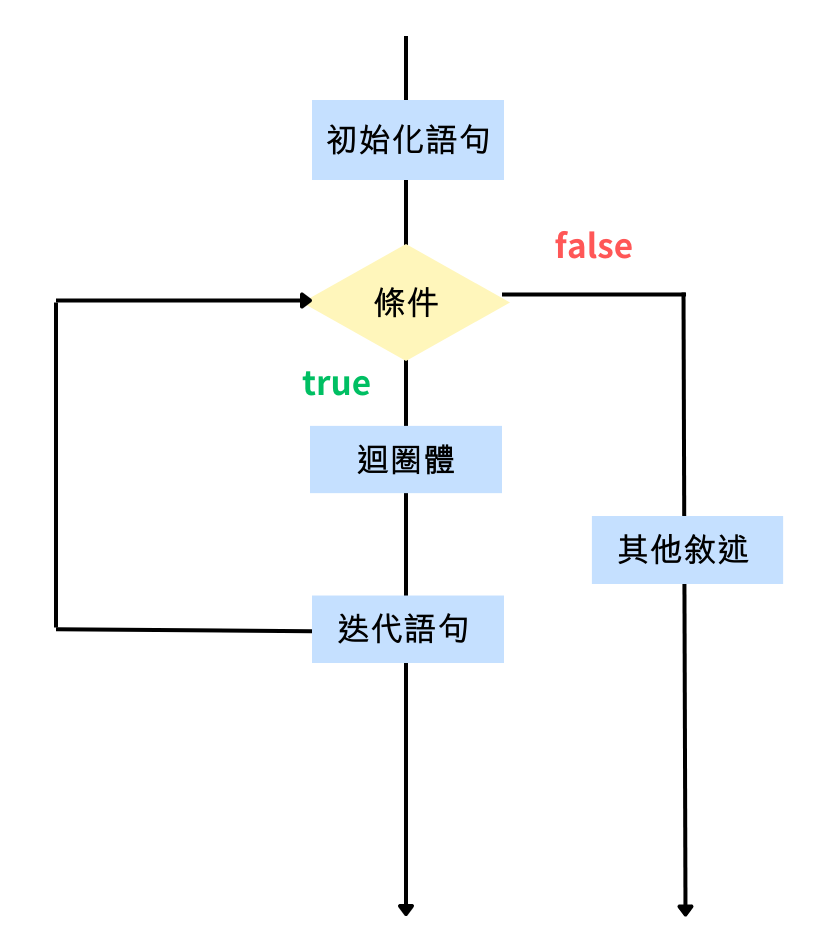昨天講完for迴圈,需要先知道執行次數,那我們要進行迴圈的另一個部分
無需先得知執行次數
初始化語句
while(迴圈條件)
{
迴圈主體;
迭代語句;
}

一樣用while迴圈從1加到10
public class WhileDemo {
public static void main(String[] args) {
int count = 1;
int sum = 0;
while(count <= 10) {
sum += count;
count ++;
}
System.out.println("1 + 2 + ... +10 = " + sum);
//1 + 2 + ... +10 = 55
}
}
注意:使用while 迴圈時,一定要保證迴圈條件要有變成false的時候,否則就會成為無限迴圈,無法結束。
public class WhileErrorDemo {
public static void main(String[] args) {
int count = 1;
while(count < 10) {
System.out.println(count);
count --;
//永遠小於10無法跳出迴圈
}
}
}
如果while 迴圈的迴圈條件緊跟著分號,表示迴圈體一個空語句,不做任何事情,java反覆執行這個迴圈體,條件返回值沒有任何改變,就形成無限迴圈。
public class WhileErrorDemo {
public static void main(String[] args) {
int count = 1;
while(count < 10) ;
//以下都無法執行
{
System.out.println(count);
count ++;
}
}
}
與while 不同在於,while會先判斷條件真假,而do while 是先執行後判斷真假。
因此至少會執行一次迴圈。
初始化語句;
do
{
迴圈主體;
迭代語句;
}while(迴圈條件);

與while 不同,do while 迴圈的迴圈條件必須有一個分號,這個分號表示迴圈結束
一樣從1加到10
public class DoWhileDemo {
public static void main(String[] args) {
int count = 1;
int sum = 0;
do {
sum += count ;
count ++;
}while(count <= 10);
System.out.println("1 + 2 + ... +10 = " + sum);
}
}
明天在繼續到巢狀迴圈及跳脫迴圈!
